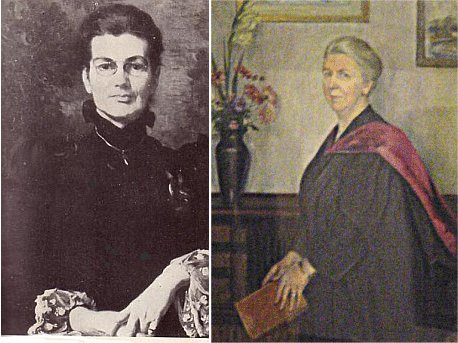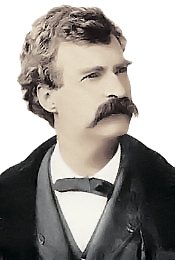
An optical illusion. Nothing’s moving.

An optical illusion. Nothing’s moving.
In The Atmosphere (1873), Camille Flammarion reports that in the latter part of October 1844, during a hurricane in the south of France, hailstones fell weighing 11 pounds. On May 8, 1802, a piece of ice fell “which measured more than three feet both in length and in width, with a thickness of two and a quarter feet.”
Nature (Aug. 30, 1894) reports that a gopher turtle, measuring 6 by 8 inches and entirely encased in ice, fell at Bovina, Miss., during a severe hailstorm there in 1893. Meteorologist Cleveland Abbe suggested that some “special local whirls or gusts” had carried it aloft. The turtle, evidently, had no comment.
In Curiosities of Human Nature (1852), Samuel Griswold Goodrich records that the duke of Argyle discovered a Latin copy of Newton’s Principia on the grass one day during a walk on his grounds. The book was claimed by Edmund Stone, the 18-year-old son of a gardener, and the astonished duke discovered that the young man was conversant with geometry, Latin, and Newton.
Argyle asked how he had come to know these things, and the youth replied that a servant had taught him to read 10 years earlier, and that he had taught himself arithmetic and geometry from textbooks, and Latin and French from dictionaries.
“It seems to me,” he said, “that we may learn everything when we know the 26 letters of the alphabet.”
In a typical Powerball lottery drawing, there are four or five second-place winners.
On March 30, 2005, there were 110.
Officials suspected fraud at first, but it turned out that most of the winners had received the same mass-produced fortune cookie, which listed five of the six winning numbers.
The coincidence cost the lottery association $19 million.
A curious race was recently witnessed in Westphalia, the contest being between pigeons and a number of bees, the respective owners of which had wagered their favorites to win. The course was three miles and a half, and a dovecot which happened to be near a hive was selected as the winning post. It was found no easy matter to mark the bees so as to make their identity unmistakable, but the difficulty was at last surmounted by rolling them in flour previous to starting them on their journey. This, while making them easily recognized on their arrival, probably retarded their flight; but nevertheless, and though the pigeons were looked upon by those interested as the most likely winners, the race resulted in a victory for the bees; the first bee arriving at the post twenty-five seconds before the first pigeon, and three other bees before the second.
— Henry Williams, A Book of Curious Facts, 1903

On Aug. 10, 1901, Charlotte Anne Moberly and Eleanor Jourdain were visiting Versailles when they were overcome by a feeling of oppression. They became lost and encountered a number of unusual people, including a man with a scarred face, a fair-haired lady sketching on the grounds, and a group of “very dignified officials, dressed in long greyish green coats with small three-cornered hats.”
Months later, in researching the history of the Trianon, they came to believe that they had somehow slipped back in time on that day to the 1770s and had there met the Comte de Vaudreuil and Marie Antoinette. Their account, published in 1911 as An Adventure, created a sensation but was ultimately dismissed. Moberly and Jourdain were respected academics, but their book simply offered no compelling evidence for their claim.
Nor have any French historians found a record of two bewildered women appearing at Versailles in the 18th century.
We are informed that the Sea Serpent was seen of Squam Bar on Wednesday last, and again on Thursday, in Sandy Bay harbour. At the latter place, he was visible for some time, within fifty yards of the shore, and was fired at a number of times with muskets; two balls were seen to strike him and rebound. He was distinctly seen by as many as fifty people; and is described as appearing perfectly calm, with his head about two feet out of water, and his body visible only in parts or humps, as he has been before described, with a space of about two feet between each. He was judged to be at least seventy or eighty feet long.
— Salem Gazette, cited in The Cabinet of Curiosities, 1824
When air hits the Alps, it sometimes drops its moisture on the windward side and descends into the land beyond as a warm, dry wind.
When this happens, headache and depression increase in Central Europe. The “murder winds” have even been blamed for heart attacks and suicide.
No one has explained the effect.

In 1858 Mark Twain had a vivid dream in which he saw his brother Henry lying in a metal burial case. On Henry’s chest lay a bouquet of white flowers with a red rose at its center.
A month later, Henry lost his life when his steamboat’s boiler exploded. A grieving Twain arrived to discover his brother’s body in a metal case—the other victims had been given wooden coffins, but the ladies of Memphis had taken up a fund for Henry, touched by his youth and good looks.
As Twain stood there, an elderly woman approached and placed a bouquet of white flowers on Henry’s chest. At its center was a single red rose.
See also A Premonition.
In June 1768, bedridden tailor Owen Parfitt was put into a chair at the door of his Somerset cottage while his sister made his bed. She emerged after 15 minutes to find only the empty chair.
A search continued throughout the rural village through the night and all the following day. No trace of him was ever found.